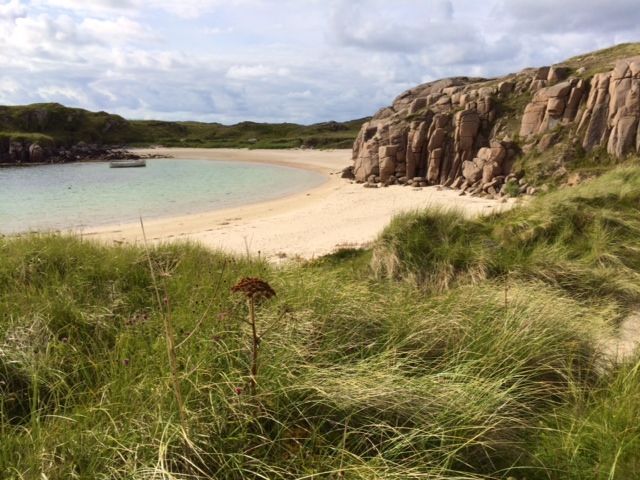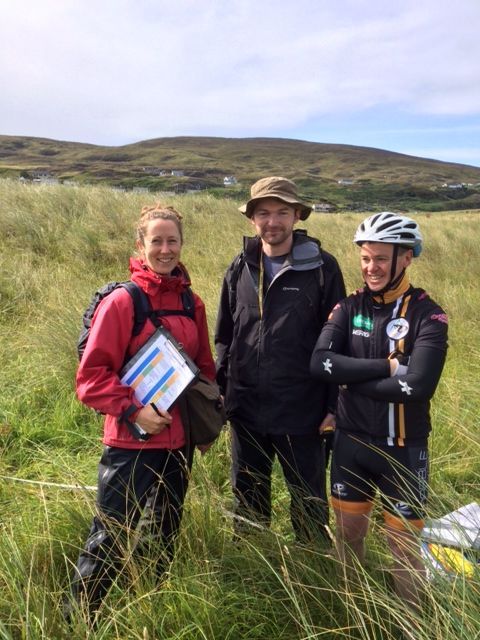
It was a bit of luck that Maria Long and John Brophy just happened to be surveying in Glencolumbkille while Bella and I were there. Maria works part-time with the Irish section of the Botanical Society of the British Isles and is also one of Ireland’s leading experts on non-marine molluscs (snails and slugs to you and me), and John is highly skilled in this group too. It is a failing on my part that I don’t give these creatures more consideration, for this is a group that shouldn’t be ignored. Molluscs come in a rich variety of types; readers of this blog will already have been introduced to two, the Kerry Slug and the Freshwater Pearl Mussel. 150 or so native species occur in Ireland and for at least 10 species, Ireland supports globally significant populations. And two species Ashfordia granulata and Leisotyla anglica, are near endemic to Ireland and Britian, and Ireland supports about 20% of their global world population. But all is not well in the non-marine mollusc world for 46 species have been found to be threatened with extinction in Ireland. So we should be worried about the reasons for this.
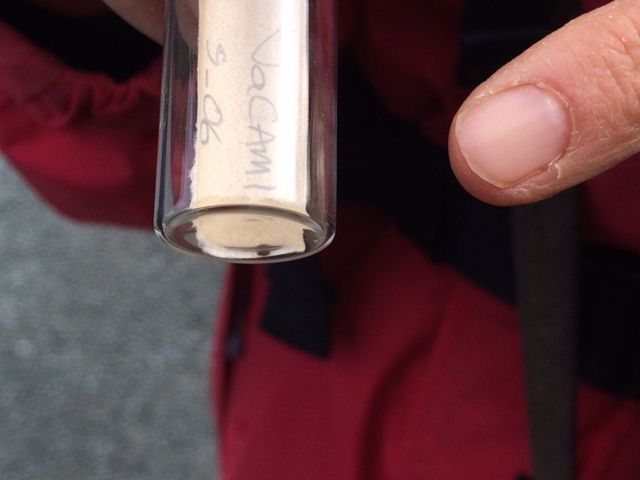
Six species are afforded protection under the EU Habitats Directive, but three have become infamous in Ireland for impacting on the Kildare Bypass and the Doonbeg Golf Course developments. The three are species of Vertigo, tiny little snails, only just about the size of the head of a pin, but with very specific habitat requirement. Maria and John were in Glencolumbkille as part of a survey to monitor the habitat quality of sites protected for these species. This particular site was surveyed on two previous occasions, and a quick read of the earlier surveys sheets showed that the vegetation at the site has changed signficantly; the vegetation has become less diverse and probably unfavourable for Vertigo angustior.
And of course at one level it is rediculous to be arguing for the conservation of this species when multi-billion euro projects are being planned, but these little creatures are like sentinels of the health of our environment – if we don’t cater for the needs of these highly specialised species, then our environment becomes less diverse and the countryside blends into a state of sameness. Planning for the needs of these creatures, not just the Vertigo but all protected species, presents the opportunity to ensure that we maintain diversity within our environment, which is a good thing for us all. Our decision-makers need to see it in these terms.
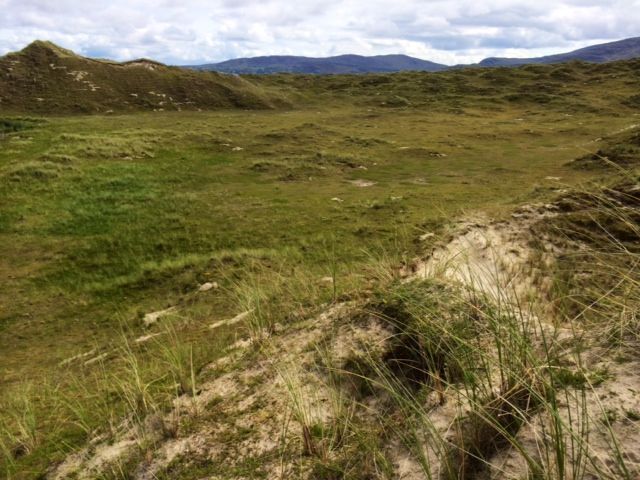
Later in the day, I visited the magnificently diverse site at Sheskinmore. This site has a massive dune complex which looks to be in good condition, but it also has a shallow lake, calcareous grasslands, saltmarsh, intertidal sand flats, swamp, fen and wet grassland. Hardly surprising then that this is one of the most important conservation sites in the north-west, crammed full of rare and specialised species, in both summer and winter.
While at Sheskinmore I gate-crashed a workshop on monitoring Marsh Fritillary, Ireland’s only legally protected insect. Like the Vertigo, Marsh Fritillary is afforded strict protection, and NPWS is obliged to monitor how the populations are doing from year to year. To do this properly requires coming up with a survey method that really works, and that can be replicated across the country. This is what the workshop was trying to do. And it seems to have been a good year for Marsh Fritillary judging by the number of caterpillar webs that were everywhere amongst the vegetation.
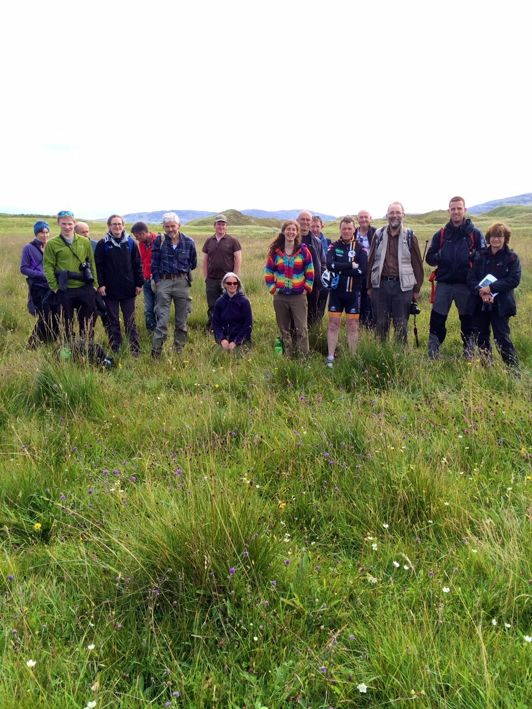
Recent years has seen a big improvement in the science of conservation, and we now have a better understanding of how biodiversity is changing. This is largely driven by NPWS, and the impressive work done by NGOs like Bat Conservation Ireland, BirdWatch Ireland and the Irish Whale and Dolphin Group in mobilising volunteers to undertake properly organised large-scale surveys and managing that information. But there are also a growing number of people who are documenting the wildlife that they see, and sending that information into organised schemes and to the National Biodiversity Data Centre.
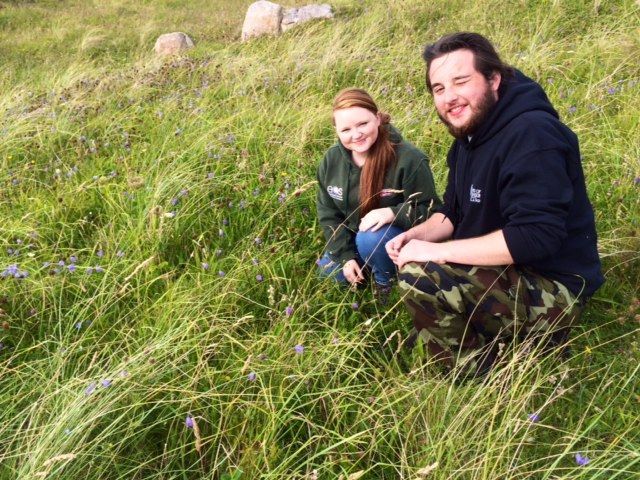
Oisin Duffy, an intern with the Data Centre last year, and his partner Mairead Crawford are two such up and coming recorders. Both understand the value of recording wildlife in their areas and ensuring that information makes it way to national surveys. Both are from Donegal, and I was delighted when they agreed to meet me at a lovely rich grassland site just behind Carrickfinn Airport. Walking through the grassland being shown the specialities of the site, like the frog orchid, was a real treat. And, viewed from the perspective of an old cynic like myself, it is great to see two young enthusiastic recorders learning at such a rapid rate and clearly really enjoying what they are doing. Mairead tells me they have just recently been made county botanical recorders for the East Donegal Vice-county, which means that a great deal more will be known about the area over the years ahead.
The National Biodiversity Data Centre is trying to nurture this younger generation of recorders, and thanks to the state-of-the-art systems developed by Compass Informatics based on internet technologies, we can engage with this new generation in a way they are comfortable with. Mind you, Oisin and Mairead acted in a very old-fashioned way by presenting Bella and I with a lovely goodie-bag of cream-cakes, Dillisk, and bottles of the seriously sweet McDaids Football Special. Just what was needed after a long day’s cycle.
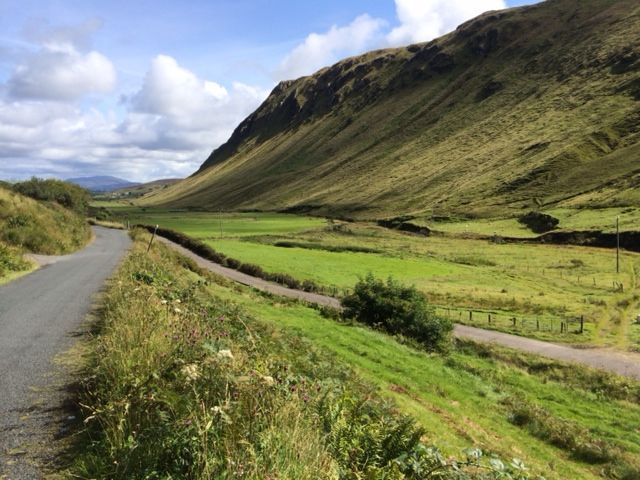
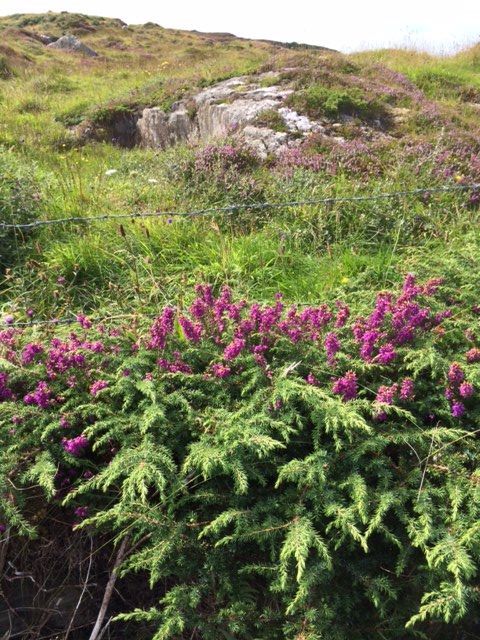
I don’t know Donegal well, but during the first day in the county I have found plenty of interest. The cycle from Glencolumbkille took me up over high ground and through blanket bog, only to be gob-smacked by the incredible Glengesh U-shaped valley. I studied geography in college, and have visited many important Irish landscapes, but I never heard of Glengesh. Yet it is a perfectly shaped glaciated valley and looked stunning when I passed. At every corner, every turn of the road, there is a rich biodiversity evident in the fields. Even along the roadside verges, seeing juniper growing amongst the heather was a surprise, for juniper is a localised species in Ireland.

